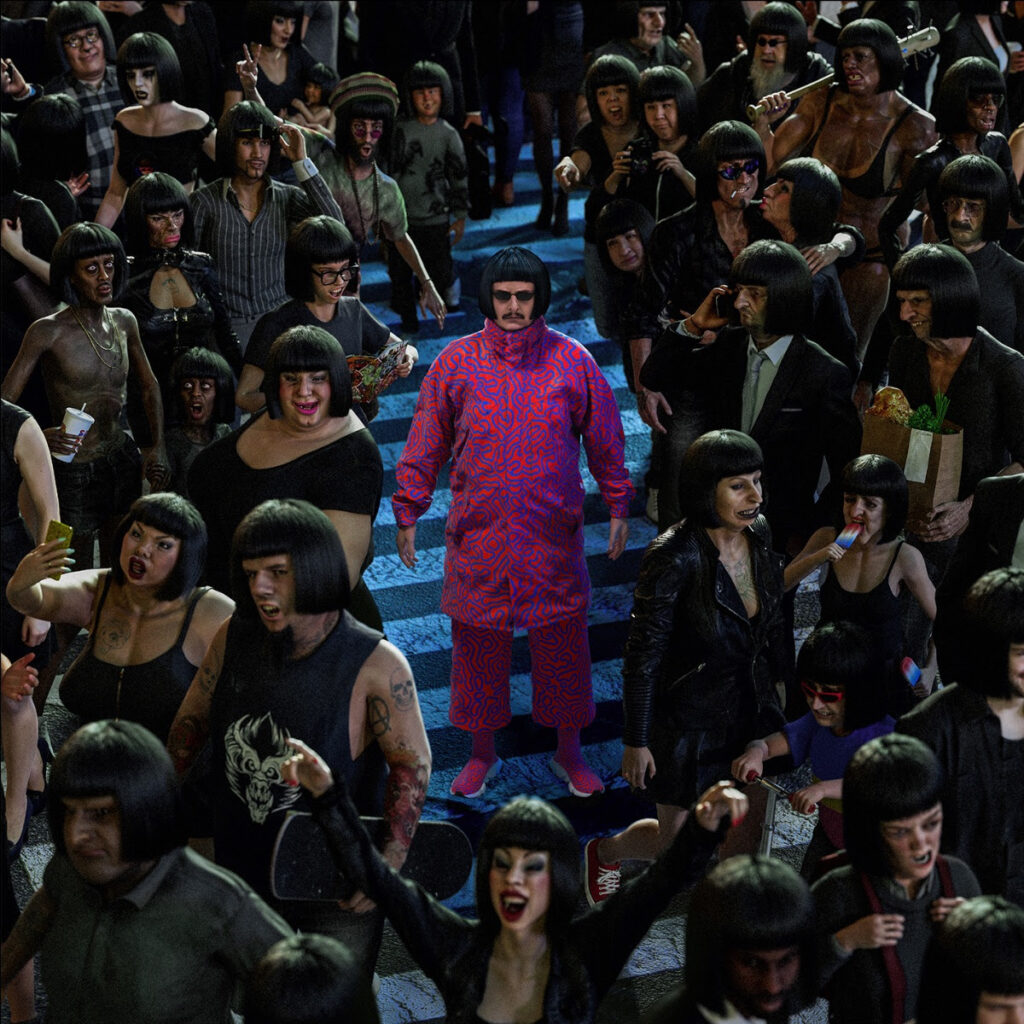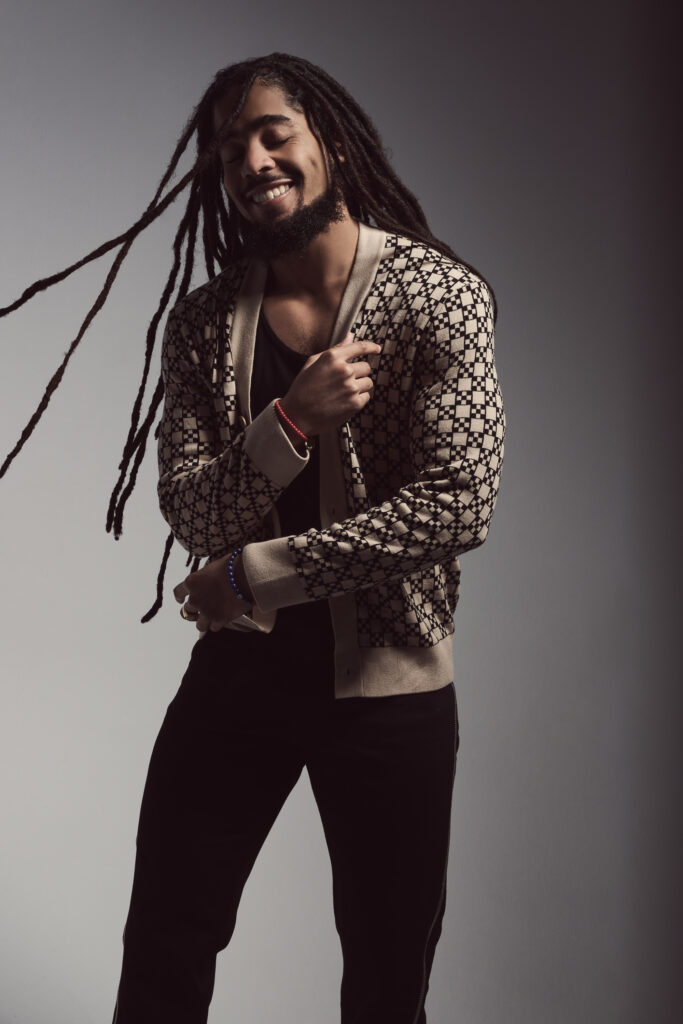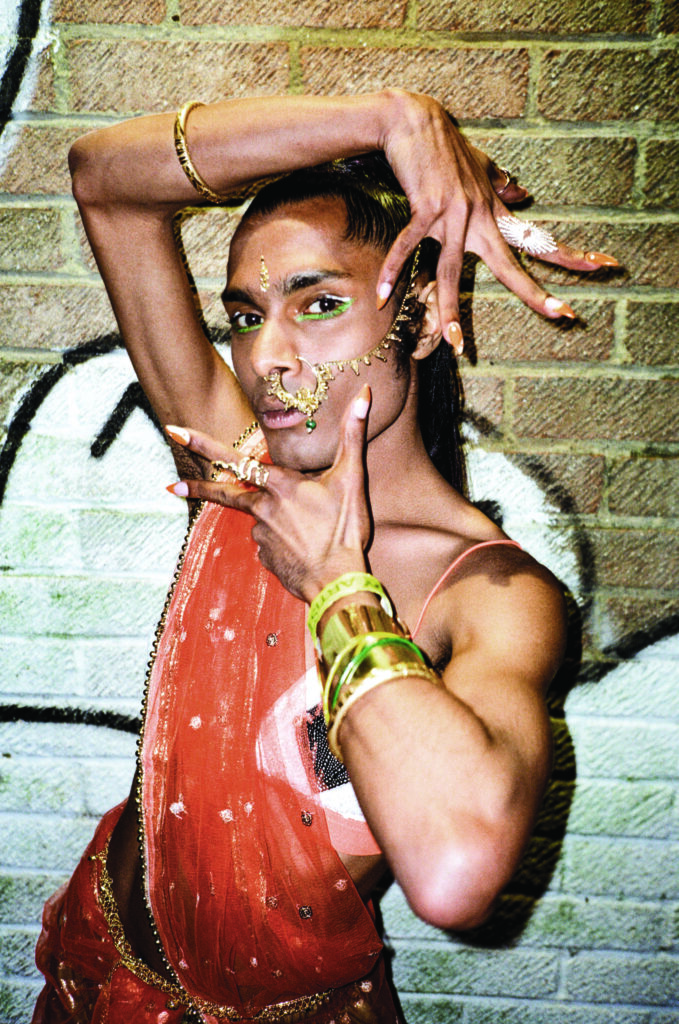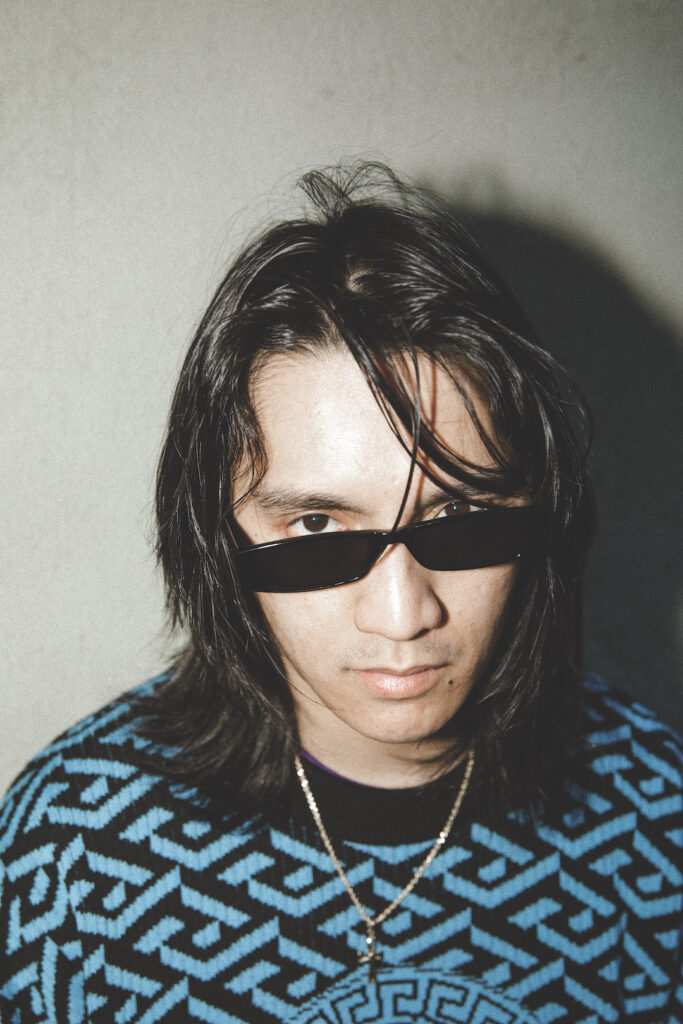Korean Designer Jung Wook-jun Sets a Confident New Standard For Contemporary Design
Words by Karl Smith
Photography by Hong Jang Hyun
When we talk about contemporary design what we’re really talking about is an idea of something far more robust than just a kind of design which, by chance rather than intention, is happening right now. Something which captures the essence of the now rather than just something as arbitrary as the timeframe.
True contemporary design isn’t even just a reflection of the zeitgeist. It isn’t just a mirror to our world but rather something more like a prism; taking the elements of what we know, what we see around us, and refract- ing them. Reshaping them into something beautiful but distinct. Something made with the same materials with which we started but a final product much more than (and hardly recognizable as) the sum of those parts.
And so, again, when we talk about contemporary design– names like Raf Simons, Virgil Abloh, Kim Jones, Riccardo Tisci, Yoon Ahn and even Kanye West might immediately come to mind as key designers emblematic of our modern era. But without meaning to diminish their talents or their achievements, there’s really only a few who fit the exact criteria. A handful of names who are singled out not only as designers, but as something more like world builders. Names like Martin Margiela, Alexander McQueen, Rei Kawakubo and Jung Wook-jun. While it’s true that the Korean designer, better known these days by his label moniker, Juun.J (pronounced June Gee) is a relative newcomer in terms of that auspicious list – his label founded back in 2007 – Jun is, it would be more than fair to say, very much already a luminary in his own right.
Having launched his first label Lone Costume in 1998, Jun is an integral part of a new wave of Korean designers. A group now following the path first trodden by the Japanese creatives who rocked Paris in 1981, but very much working from their own set of directions. In this sense, it was only fitting that ten years after his own Paris Fashion Week debut, Jun was invited to be guest designer in 1997 at Florence’s Pitti Uomo, the biannual gathering of menswear enthusiasts from around the world. But, as a watershed moment for Korean design as a part of mainstream fashion, is it not something that could have happened sooner?
“I think everything has its own timing,” Jun tells me, sanguine as ever in his responses. “On the other hand,” he continues, “I also believe that the result of the struggles the senior Korean designers had overseas has given me the opportunity. I was able to experience and learn from their work; to gain knowledge and attitude for going international.” It’s a typically considered response from a designer with a knack for the bigger picture and an upbeat outlook which runs counter to the misanthropy and cynicism – some real, some very much affected – that can dominate the industry. Characteristically, he finishes the thought on a positive note: “I was very happy and grateful to be invited to Pitti Uomo as a guest designer.”
It’s interesting though, that Jun should be invited to Pitti Uomo, an event so geared toward menswear, considering that his genderless approach to fashion design is often the first thing noted in interviews and biographies or even simply in the context of reviews. In fact, Juun.J has been setting the standard for that particular cultural thread. One now well-worn and firmly sewn into the fabric of more or less everything we do. Well before the world at large began tugging at in earnest.
“There was no gender restraint even from the beginning of Juun.J,” he begins to tell me when I ask how shifting public perception of gender has affected his work through time. “Gender boundaries are never placed while choosing silhouette, material, color; in any elements of clothing.” Even the basic, undeniable fact that “Juun.J has become well known for its oversized silhouette,” he affirms, “is the result of work that goes beyond gender.”
Outside of his own work though, has he noticed any kind of shift in attitude or process? “I believe that the evolution of ideas about gender will continue. I think gender roles and job stereotypes will change dramatically,” he offers, with a customary open-ended thoughtfulness, before returning to the more specific topic at hand. “I think the most important evolution is the evolution of gender role(s) and its/their meaning throughout the industry. As men and women continue to exist in the future, menswear and womenswear are likely to exist separately. However, the meaning of gender-specific clothing is likely to be blurred. The desire, with Juun.J is to create menswear without it looking too masculine, and womenswear without it looking too feminine.”
As with everything Jun does, it’s about creating a balance that facilitates progress rather than pushing it. And it’s the same approach, the same mindset that he takes into questions about the future of fashion when it comes to the prolificacy of streetwear and the blur- ring of what used to be such distinct, dividing lines. “I think it’s a phenomenon and also something inevita- ble,” Jun suggests, when we talk about this uneasy but insistent partnership. “I think,” he adds, forever zoom- ing out to consider the question as a single part of some much larger whole, “the sensation of diversity and cul- tural mix is a phenomenon of culture beyond fashion. Collaboration between fashion brands has also begun. It’s still awkward and strange but I think this will be a fashion phenomenon and trend in the future.”
Ruminating on collabs that include the likes of adi- das for Prada and Louis Vuitton x Nike Air Force 1, Jun is quick to point to the engine of change. A trend that “has been further expanded by the seemingly common collaborations in fashion between sports and designer brands” but is ultimately keenest of all to point out the possible positives in a much broader sense. “Now,” he tells me, “I would like to say that the best keyword of all cultures is ‘collaboration.’”
And, as far as Jun – and Juun.J – are concerned, these aren’t just empty words. It’s a philosophy he brings to the table as a part of the design process. Something, despite his own name being the one on the label, he refers to as a “team collaboration.” It’s clear in everything he does; it permeates all the ways in which he thinks about creativity and artistry as a broad church based on the co-mingling of ideas and concepts. When I ask about the connection, the busy intersection between fashion and art, it’s clearly something which occupies Jun’s thoughts on a regular basis.
“I think fashion and art were together from the beginning of fashion,” he tells me with the kind of serene certainty that only really accompanies personal convic- tion. “I believe that they will continue to influence each other and coexist in the future. Art is to be seen, fash- ion is to be worn. Yet, they hold the same future when it comes to being beautiful and aesthetic.”
The two forms come together not only in his work, but in his home life too. “I’m into collecting art pieces these days,” he begins, “but, rather than collecting pieces of famous artists, they are works like mine – Juun.J-like pieces such as, Robert Mapplethorpe’s photographs, Haegue Yang’s installation art, and Daniel Boyd’s paint- ings. “All of these art pieces are in black and white color. Pieces that are connected to Juun.J’s identity. I’m very happy to stay with these works in my place, my home.” As ever, nothing, when it comes to Jun and the things he is so clearly passionate about, is done without care.
In this same vein, asked about the line between popular culture and fine art or, more accurately his belief in the wrongheadedness of that line, Jun is clear. “Carefully speaking, I don’t want to draw a line between the two,” he tells me. Fine art will last forever and its value will become greater. Popular culture will also exist with its trends, forms and content formats changing rapidly by era. “Even among the social media creators,” he adds, always receptive to new formats and mediums for creativity,
“there are some who blow my mind. I respect and admire it in itself.” Perhaps considering those works of art scattered around his home, he offers not so much a clarification as an addendum. “Perhaps,” he says, “fine art has a greater influence on popular art. And that’s inspiration.” That Jun
should take time to consider social media creators as artists is no real surprise. He is not only a pioneer in design but also a part of the world at large. He influences and is influenced. Just like all of us. Although perhaps a little more than most of us.
In this sense, I wonder how he feels about K-pop’s place in global culture. Has it, through its mass appeal, given the world a fresh perspective on Korean creativity? “Yes, I think so,” he begins, typically and sincerely happy to give credit where it is so obviously due. “K-pop has become something unique beyond music. In particular, K-pop is a culture that the newer generation is passionate about especially among teenagers. They go beyond K-pop and are interested in and even learn about Korean culture such as its language, food and fashion.”
I think every new perspective starts with an interest. Interest in Korea gave a big boost to Korean art, especially popular art. Personally, I think K-pop belongs to the popular culture. The components of K-pop are a mix of Western and Eastern pop music but with its distinctiveness and addiction. And it is a form of popular art that combines all fashion, video, social media channels, etc. which make the music stand out. Maybe the best element to overcome the language barrier is music. I believe all the artists that are composing K-pop are also infinitely inspired by fine art.
Following on from those thoughts, I wonder if that same moment is coming for Korean fashion. Whether that wave, that momentum, can carry all those adjacent art forms that Jun mentions as a part of the K-pop collage. “I think the start of the Korean fashion scene is now,” he tells me, clearly confident in the depth and breadth of the talent his country is producing right now, and in their abilities as part of an ever more globalized culture to succeed on the world stage. “The young Korean brands that are sprouting now think ‘global first’ and are trying to enter foreign markets through various channels unlike before. I think it’s a phenomenon of the times,” he elaborates. “What worries me and makes me cautious,” he adds, perhaps rightly perturbed by K-pop’s own fascination with market domination above all else, “is the attitude of being fully focused on business aspects rather than brand value.”
Never one to point to a problem without proposing a solution though, he ends the thought on an optimistic note. “The K-fashion scene will have a great future ahead,” he says, before offering a caveat: “if there is a bigger focus on genuine brand identities.” And genuine identity is something Jun knows better than most. He knows design. He knows art. He knows culture. But most of all, what’s clear from our conversation and from observing his work over the years is that Jun knows his own mind.
The beginning of the challenge was in my name. I wanted my name to become a brand and I believe that making a brand with your own name necessitates a responsibility for the brand. It was a time of examining and agonizing over my identity. Participation in Paris Fashion Week was the beginning of taking on challenges in the global market. Every season, I struggled to show the consistent identity unique to Juun.J because identity to me meant the permanence of the brand.
This is Jun – and Juun.J – distilled. And it’s some- thing neatly crystalized when I ask him as a final thought what makes truly great design. His answer is emphatic and in-keeping with everything he’s told me so far.
“One’s own identity!”
@juun_ j















































































































